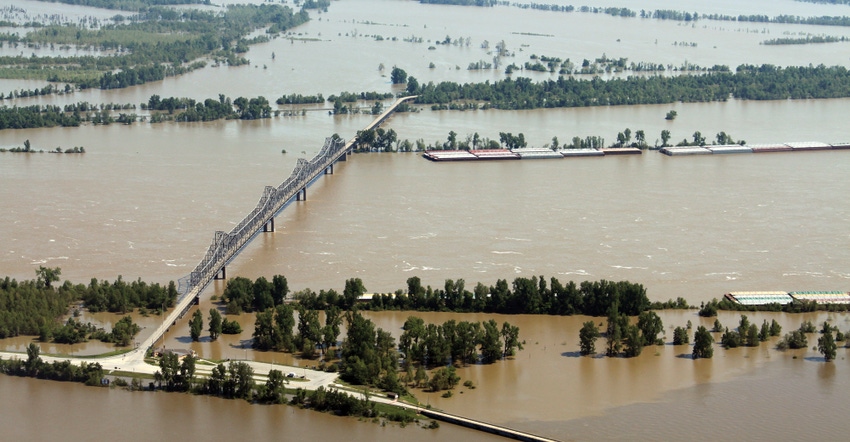December 16, 2016

The federal government is preparing to spend more than $400 million in disaster relief funding to address flood damage that occurred in the Lower Mississippi River Valley in the winter and spring of 2016.
The money is part of the fiscal 2017 continuing resolution (H.R. 2028) that will fund the government through April 28. President Obama signed the legislation after Congress adjourned for the year.
“Ongoing assessments of flood control systems, ports and navigation on the lower Mississippi indicate extensive and corrosive damage from flooding last winter and spring,” said Sen. Thad Cochran, chairman of the Senate Appropriations Committee and one of the principal authors of the legislation.
“The strength of the Mississippi River levee system is measured by its weakest link. It was important that the Army Corps of Engineers has resources to ensure viable navigation and flood protection on the Mississippi and its tributaries.”
Cochran said more than $30 million of this lower Mississippi funding has been identified for use in Mississippi on at least 23 different Army Corps of Engineers projects to repair damages to levees, dikes and backwater improvements.
Flood control programs
The $400 million that will allow the Army Corps to make improvements in the Lower Mississippi Valley is provided through the Mississippi River and Tributaries project, Operations and Maintenance account and the Flood Control and Coastal Emergencies program.
Cochran said the ongoing work is necessary to prevent another disaster like the great the flood of 1927, which caused the equivalent of more than $17 billion in damages throughout the lower Mississippi Valley.
The Mississippi River Commission assessed the Mississippi River and Tributaries system last summer and determined that heavy rains and severe flooding caused by storms in December 2015 and March 2016 compounded the need for repairs already under way following the historic 2011 floods.
The spring floods in 2011 caused some of the highest river levels and resulted in the Army Corps using flood control measures that had not been implemented since the floods of 1927 and 1937.
The Board of Mississippi Levee Commissioners, the Yazoo-Mississippi Delta Levee Board and the City of Vicksburg are among dozens of flood control districts, levee boards and port authorities supported emergency appropriations to accelerate repairs on the lower Mississippi River.
$1.02 billion total
Overall, $1.02 billion is available to the Army Corps nationwide to repair damage caused by floods, hurricane and other natural disasters. This assistance is in addition to regular fiscal 2016 discretionary appropriations enacted by Congress.
The Lower Mississippi River Valley generally stretches from southern Illinois to the Gulf of Mexico and includes the states of Mississippi, Louisiana, Arkansas, Tennessee, Missouri, Kentucky and Illinois.
The Mississippi River and Tributaries Project, which was authorized by Congress following the devastating flood of 1927, is a comprehensive system of levees, floodways, channel and tributary basin improvements providing flood protection for approximately 4 million people and navigation benefits to the nation. It has saved taxpayers approximately 45 dollars for every 1 dollar invested in it since its inception.
For more information, visit http://bit.ly/2hy6Vz2.
About the Author(s)
You May Also Like






